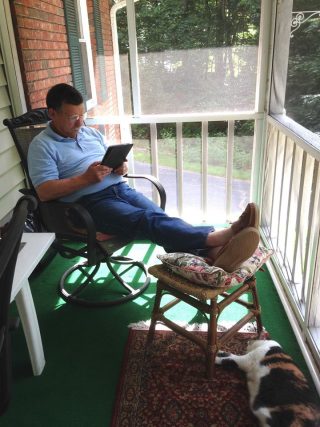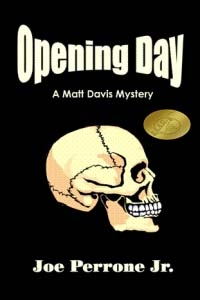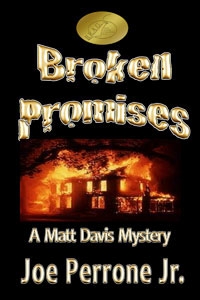Today Stephanie interviews B.R.A.G. Medallion Honoree Joe Perrone about his crime fiction work.
Joe, when writing crime fiction, there are usually several characters involved. What is your advice in presenting each character so they stand out?
In creating the main character for the first book in the Matt Davis Mystery Series, As the Twig is Bent, I already had an actual person in mind for the character of Matt Davis. I had seen a television commercial with a man who I thought Matt should look like, and I literally drew my character to physically resemble that actor. I think it helps to have a specific person in mind, or at least have an idea of what your character ought to look like. More than that, however, it is important to “flesh out” your character with: physical appearance; clothing preferences; likes and dislikes; quirks; level of education; life experience, etc.
I actually make a list of my main characters in a separate document, with their physical and intellectual attributes that I may consult many times in the course of writing a book. Minor characters who are seen only momentarily can be made up on the spot and described as “the mailman, a man in his forties,” or “the grocery clerk, a pimply-faced, teenaged kid” and so forth.
I think it is important for writers to give conflicting reasons for their characters to be criminals. For readers to find that connection-if you will-or to perhaps sympathize with them. How do you pull that off and what is your advice on doing so?
I generally create a back story for each of my criminals. If, for instance, a character had a life-changing event like losing his or her father at a young age, I might describe that particular incident and its impact upon the character. I often will do research into what might be described as a “profile” of typical types of criminals. For instance, why do pyromaniacs set fires? Often it is to relieve tension or to provide sexual release. Research is key to developing realistic characters.
Crime Fiction can be difficult to write because it contains many plot-lines. How do you keep track on who has done what and when?
Now you’ve really nailed (at least, for me) the most difficult aspect of this type of writing. I love to create characters, and I literally salivate at the prospect of creating realistic dialogue for them. But when it comes to plot, that’s a sticky wicket. I generally have a basic idea for a story line, and it’s with that in mind that I start to write. The rest, however, is a crap shoot, with the characters and their predicaments often determining where the plot goes. If I have a number of intertwined plots, I will often make an outline, with a name for each plot: robbery; investigation; back story; interaction between different characters, etc. I tend to move back and forth in time with my various plots, so it is often necessary to keep a kind of dateline, with various important dates listed along with the events that took place on each date. This is where my beta readers play an important part in the production of my books. Because I am so close to the book, I need other sets of eyes to detect where there might be conflicts or inaccuracies, and have them pointed out to me.
Crime fiction must be believable. Real-life for the basis of your story is important. How I do you corporate this?
Here is where research is really important. Often it is necessary to cite actual events in order to give credibility to your storyline. Find an event that interests you, and change some of the aspects to fit your own story. Music is very helpful in setting a scene. I might have one of my characters listening to the radio, specifically to a song of the era in which the story is set. If I’m writing about an event that took place in the 70s, I would include in my research what song might have been number one (or even number five) on the Billboard Hit Parade at the time. By giving particular facts like the songwriter or artist who made it a hit, I can add credibility to my scene. Quoting relevant song lyrics, or a particular sporting event that may have taken place at the time is also another way to add realism and believability to your story. I am always “connected” to the Internet when I am writing, and I absolutely LOVE research. Finding a location on a map is another way to add realism. You can use a real street, but create a fictitious edifice, etc.
How do you prevent your story from becoming boring?
I don’t know if there’s any formula for doing that, other than really caring about what you are writing. Each day, before I start writing, I go back and read what I wrote during my last session. If I don’t find it interesting (if it’s boring), I make changes. One thing that a writer needs to avoid at all costs is listing activity, or what I call the “then he did this, and then he did that” syndrome. That is poison. If it’s boring, you ought to be able to recognize it. One rule to go by is that if something doesn’t move the story along, it will probably be boring. We only want to know what the character did IF it impacts the story.
How should a writer “not” start the opening line to their crime story?
I’m afraid that if there were an easy answer to that question, every author would pen a best seller each time they sat down to write. I can tell you this, however: When I sat down to write my very first mystery, As the Twig is Bent, I had only one thought in my mind: “It was a dark and stormy night.” With that thought in mind, I wrote a scene involving a man on a cross country flight, in a dramatic thunderstorm. The rest, as they say, is history!
But you asked how “not” to start the opening line. Okay, I would say again that there is no easy answer. Everyone is unique, and every opening line should be, too. My advice would be that the opening line should have one purpose, and one only: to make the reader curious. If you can achieve that, you’ve got a good opening line.
What are the key components in writing crime fiction you might not have mentioned above?
I think having good solid characters is probably the most important aspect of good writing, whether it be crime fiction or literary fiction. Aside from that, believability and detail stand out in my mind. My readers often mention that they enjoy all the detail that I put into my books. I am a bit of a nut when it comes to detail, so I might be the exception rather than a rule. As I mentioned previously, I am an Internet “Mainliner,” addicted to research. If you’re not sure about something, you can always “look it up.”
What are the crime thrillers you read to inspire you?
One of my all-time favorite books is The Boston Strangler by Gerold Frank. I also love In Cold Blood by Truman Capote. You’ll note that both books are non-fiction (although Capote called his book a “non-fiction novel,” I believe). I actually prefer to read non-fiction crime rather than fiction, including works by Vincent Bugliosi and others who write about real life events. However, when it comes to fiction, there are many authors whose work I enjoy and have tried to emulate. Among them are: Harlan Cobin, William G. Tapply, Truman Capote, Cormac McCarthy, and Lawrence Sanders, to name a few. I don’t copy other writers, but I am certainly inspired and influenced by them.
To learn more about Joe, please visit his WEBSITE
Twitter @authorjoep



Leave a Reply